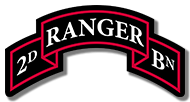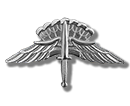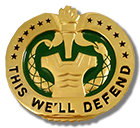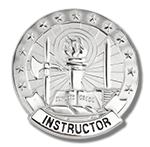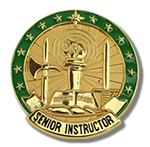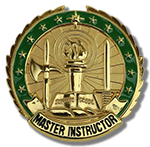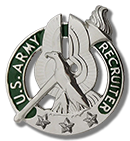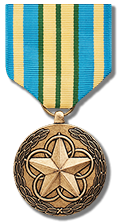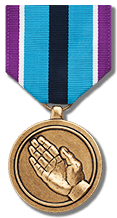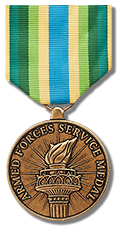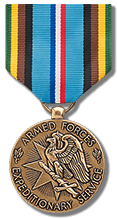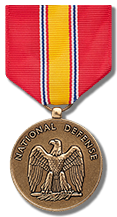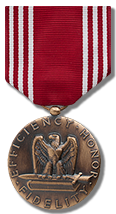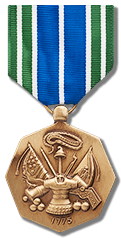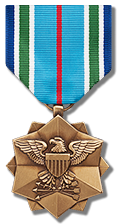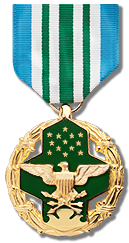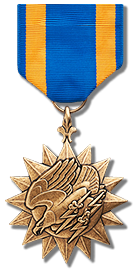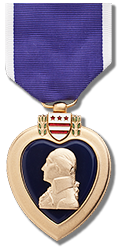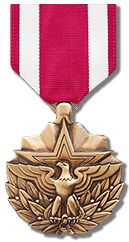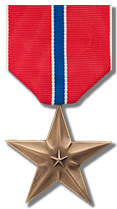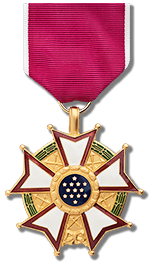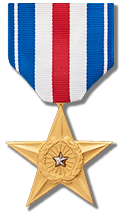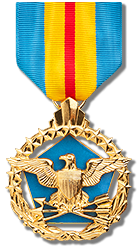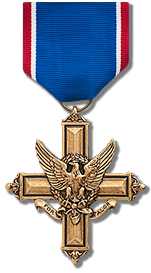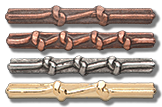|
The original Purple Heart, designated as the Badge of Military Merit, was established by General George Washington by order from his headquarters at Newburgh, New York, August 7, 1782. The writings of General Washington quoted in part: "The General ever desirous to cherish a virtuous ambition in his soldiers, as well as to foster and encourage every species of Military Merit, directs that whenever any singularly meritorious action is performed, the author of it shall be permitted to wear on his facings over the left breast, the figure of a heart in purple cloth or silk, edged with narrow lace or binding. Not only instances of unusual gallantry, but also of extraordinary fidelity and essential service in any way shall meet with a due reward". So far as the known surviving records show, this honor badge was granted to only three men, all of them noncommissioned officers: Sergeant Daniel Bissell of the 2d Connecticut Regiment of the Continental Line; Sergeant William Brown of the 5th Connecticut Regiment of the Continental Line, and Sergeant Elijah Churchill of the 2d Continental Dragoons, which was also a Connecticut Regiment. The original Purple Heart depicted on the first page is a copy of the badge awarded to Sergeant Elijah Churchill and is now owned by the New Windsor Cantonment, National Temple Hill Association, PO Box 525, Vails Gate, NY 12584. The only other known original badge is the badge awarded to Sergeant William Brown and is in the possession of The Society of the Cincinnati, New Hampshire Branch but differs in design by not having any lettering embroidered on the heart and the leaves are at the top only with a larger spray of leaves at the base. Subsequent to the Revolution, the Order of the Purple Heart had fallen into disuse and no further awards were made. By Order of the President of the United States, the Purple Heart was revived on the 200th Anniversary of George Washington's birth, out of respect to his memory and military achievements, by War Department General Orders No. 3, dated 22 February 1932. The criteria was announced in War Department Circular dated 22 February 1932 and authorized award to soldiers, upon their request, who had been awarded the Meritorious Service Citation Certificate or were authorized to wear wound chevrons subsequent to 5 April 1917. During the early period of World War II (7 Dec 41 to 22 Sep 43), the Purple Heart was awarded both for wounds received in action against the enemy and for meritorious performance of duty. With the establishment of the Legion of Merit, by an Act of Congress, the practice of awarding the Purple Heart for meritorious service was discontinued. By Executive Order 9277, dated 3 December 1942, the decoration was extended to be applicable to all services and the order required that regulations of the Services be uniform in application as far as practicable. This executive order also authorized award only for wounds received. Executive Order 10409, dated 12 February 1952, revised authorizations to include the Service Secretaries subject to approval of the Secretary of Defense. Executive Order 11016, dated 25 April 1962, included provisions for posthumous award of the Purple Heart. Executive Order 12464, dated 23 February 1984, authorized award of the Purple Heart as a result of terrorist attacks or while serving as part of a peacekeeping force subsequent to 28 March 1973. The Senate approved an amendment to the 1985 Defense Authorization Bill on 13 June 1985, which changed the precedent from immediately above the Good Conduct Medal to immediately above the Meritorious Service Medals. Public Law 99-145 authorized the award for wounds received as a result of "friendly fire". Public Law 104-106 expanded the eligibility date, authorizing award of the Purple Heart to a former prisoner of war who was wounded before 25 April 1962. The National Defense Authorization Act for Fiscal Year1998 (Public Law 105-85) changed the criteria to delete authorization for award of the Purple Heart Medal to any civilian national of the United States while serving under competent authority in any capacity with the Armed Forces. This change was effective 18 May 1998.
|


